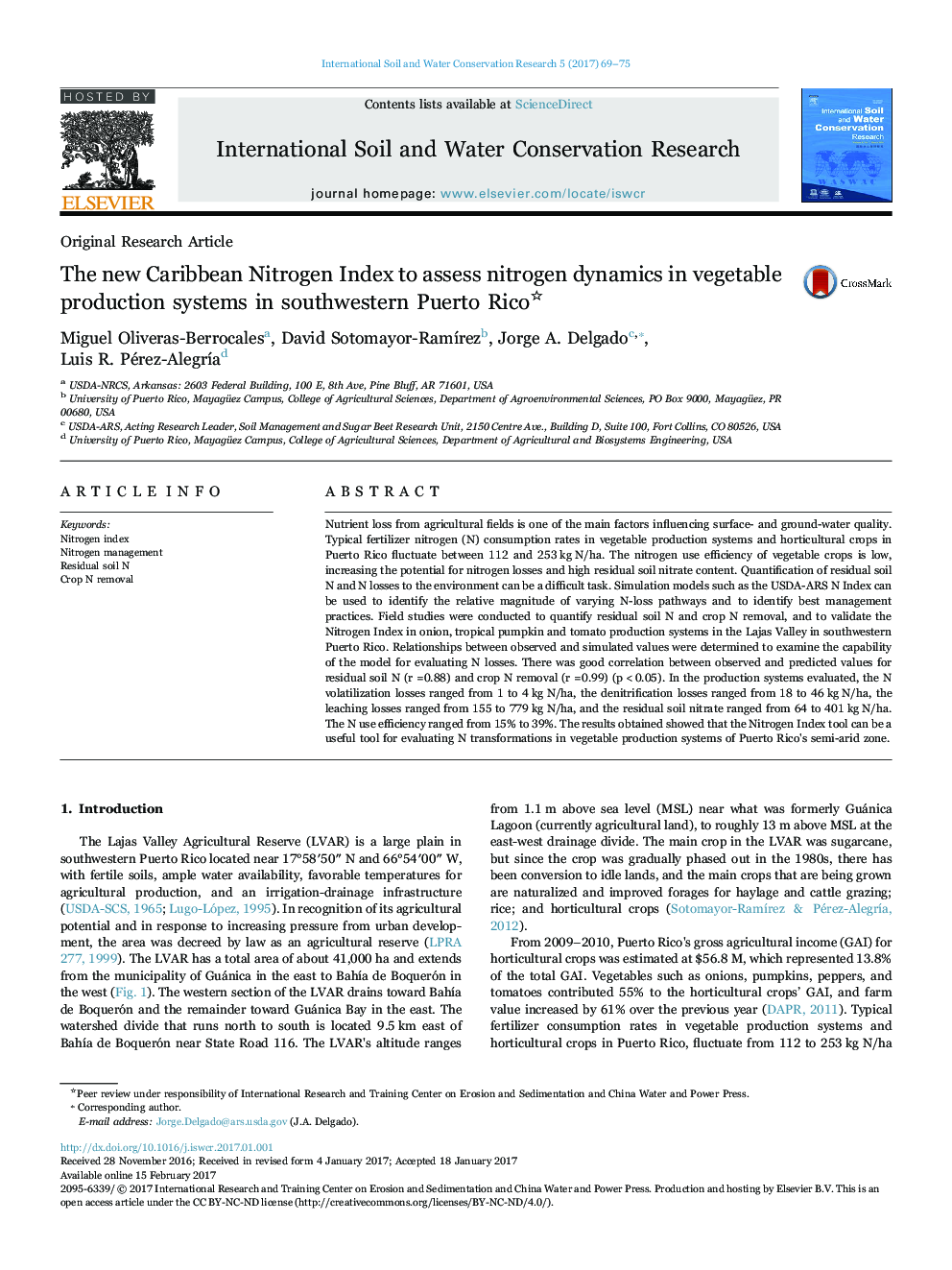| Article ID | Journal | Published Year | Pages | File Type |
|---|---|---|---|---|
| 8865177 | International Soil and Water Conservation Research | 2017 | 7 Pages |
Abstract
Nutrient loss from agricultural fields is one of the main factors influencing surface- and ground-water quality. Typical fertilizer nitrogen (N) consumption rates in vegetable production systems and horticultural crops in Puerto Rico fluctuate between 112 and 253 kg N/ha. The nitrogen use efficiency of vegetable crops is low, increasing the potential for nitrogen losses and high residual soil nitrate content. Quantification of residual soil N and N losses to the environment can be a difficult task. Simulation models such as the USDA-ARS N Index can be used to identify the relative magnitude of varying N-loss pathways and to identify best management practices. Field studies were conducted to quantify residual soil N and crop N removal, and to validate the Nitrogen Index in onion, tropical pumpkin and tomato production systems in the Lajas Valley in southwestern Puerto Rico. Relationships between observed and simulated values were determined to examine the capability of the model for evaluating N losses. There was good correlation between observed and predicted values for residual soil N (r =0.88) and crop N removal (r =0.99) (p<0.05). In the production systems evaluated, the N volatilization losses ranged from 1 to 4 kg N/ha, the denitrification losses ranged from 18 to 46 kg N/ha, the leaching losses ranged from 155 to 779 kg N/ha, and the residual soil nitrate ranged from 64 to 401 kg N/ha. The N use efficiency ranged from 15% to 39%. The results obtained showed that the Nitrogen Index tool can be a useful tool for evaluating N transformations in vegetable production systems of Puerto Rico's semi-arid zone.
Keywords
Related Topics
Physical Sciences and Engineering
Earth and Planetary Sciences
Earth-Surface Processes
Authors
Miguel Oliveras-Berrocales, David Sotomayor-RamÃrez, Jorge A. Delgado, Luis R. Pérez-AlegrÃa,
